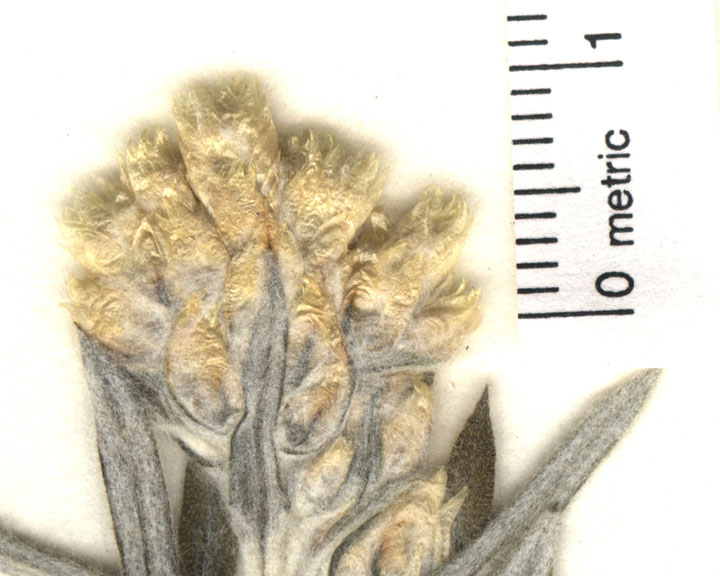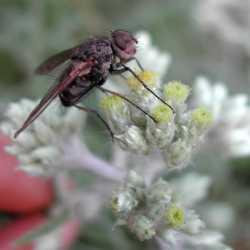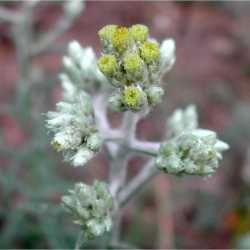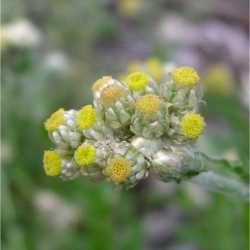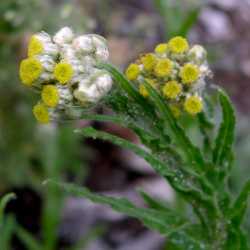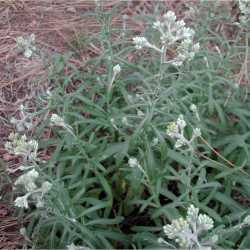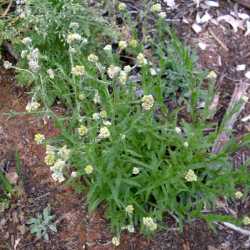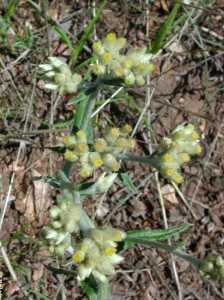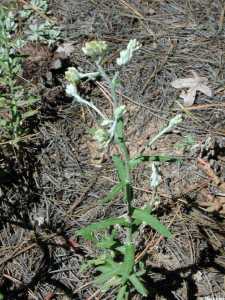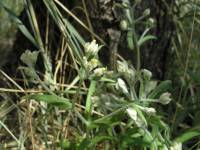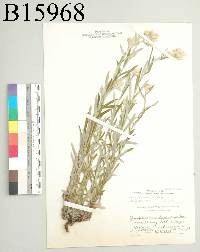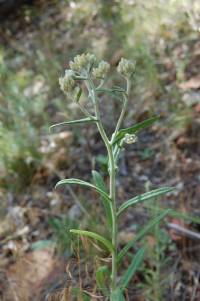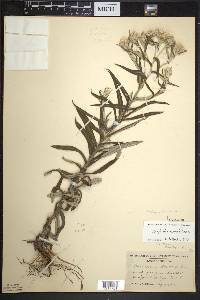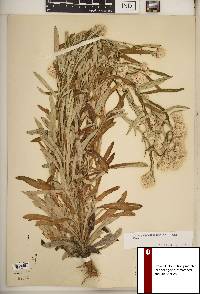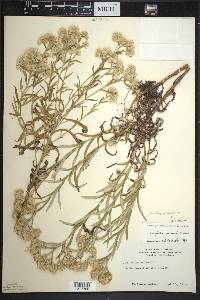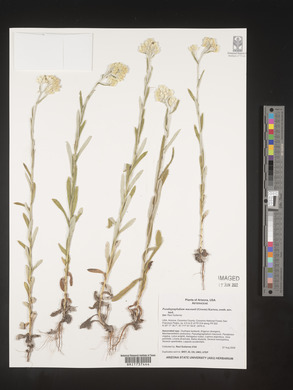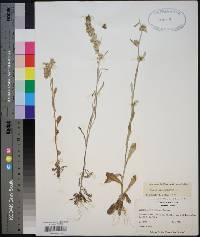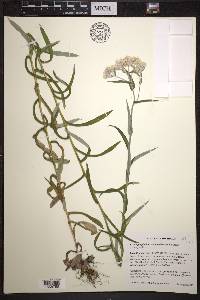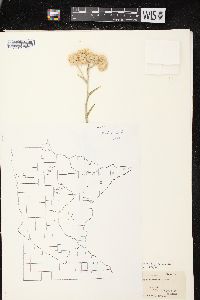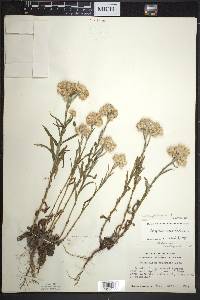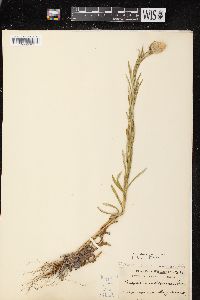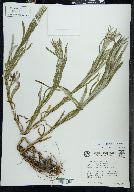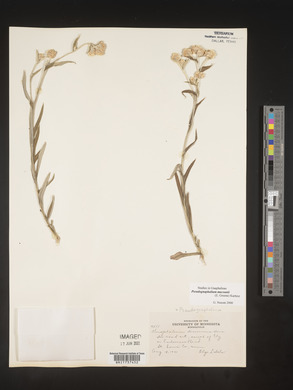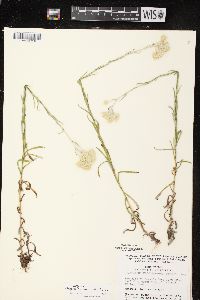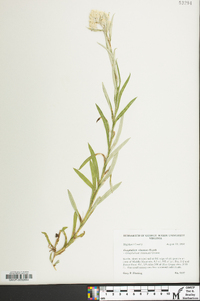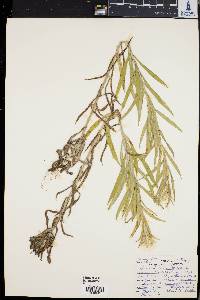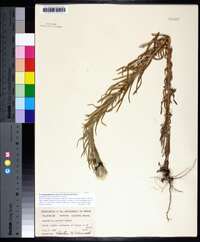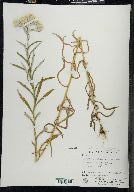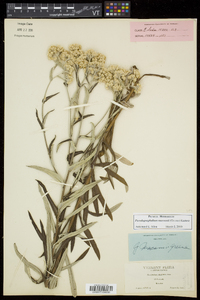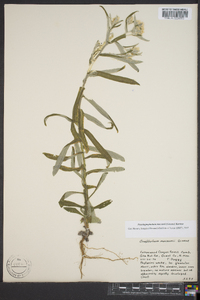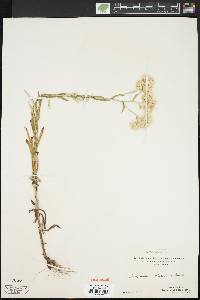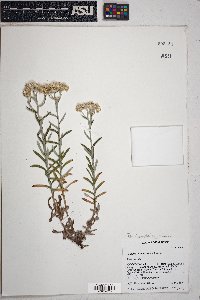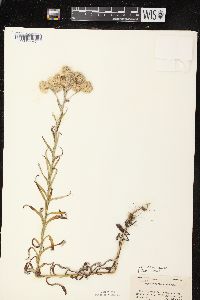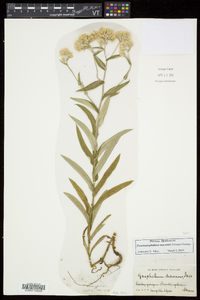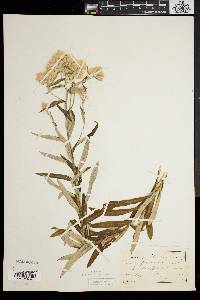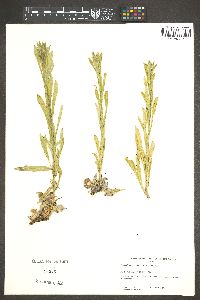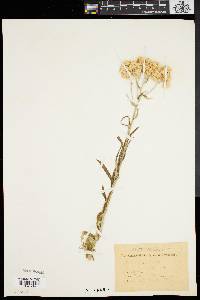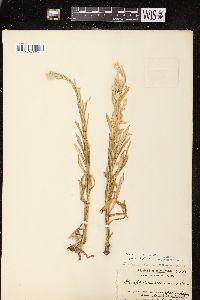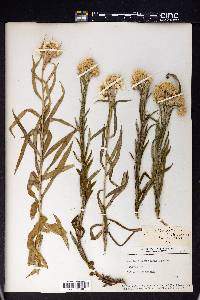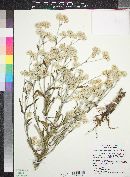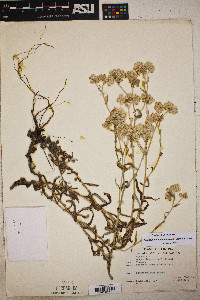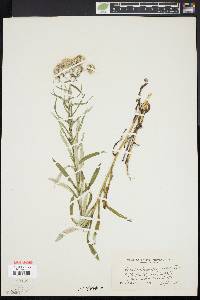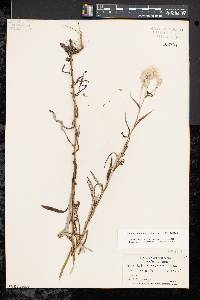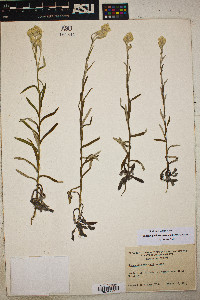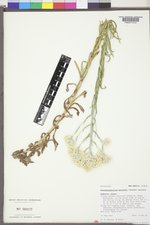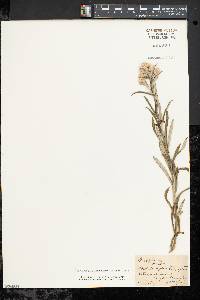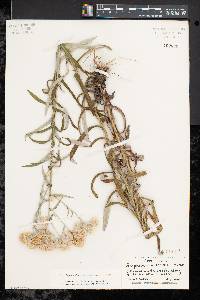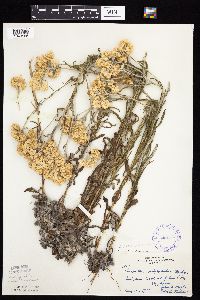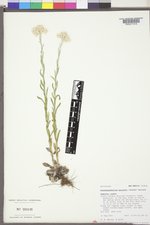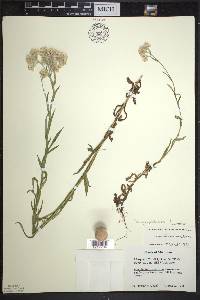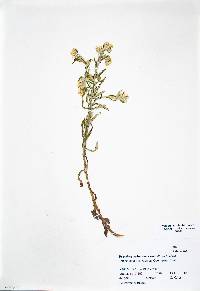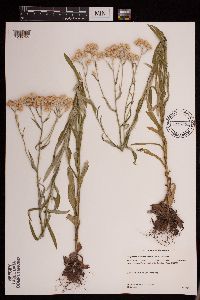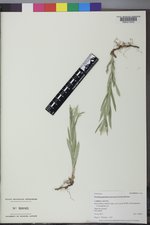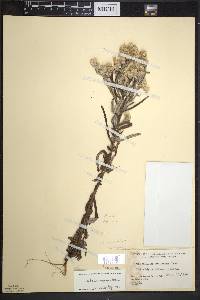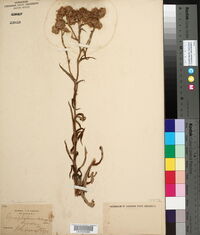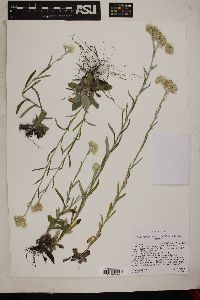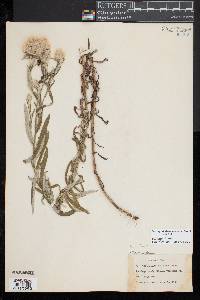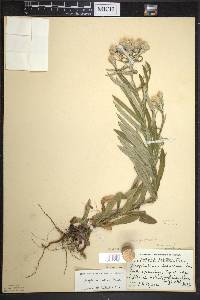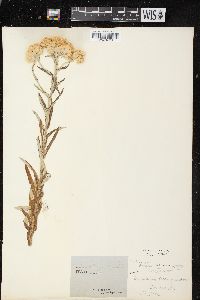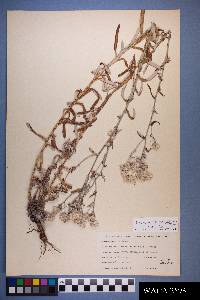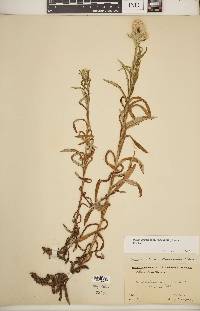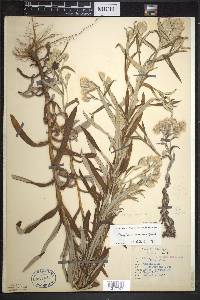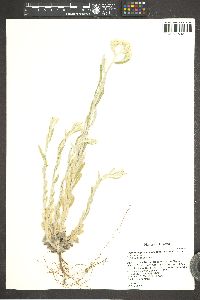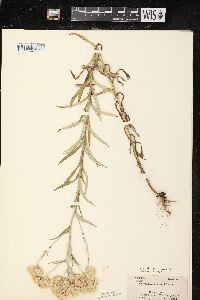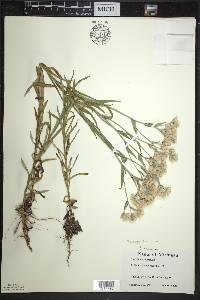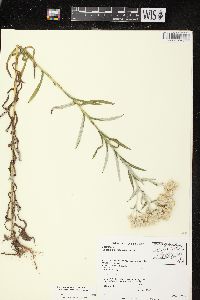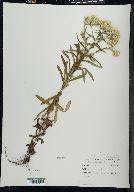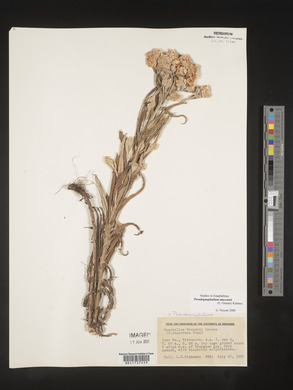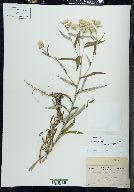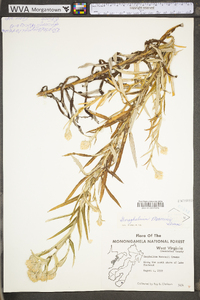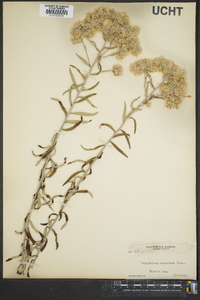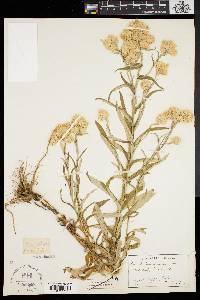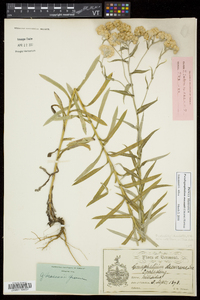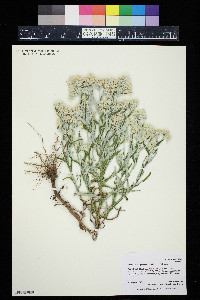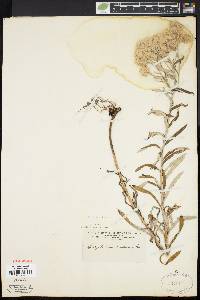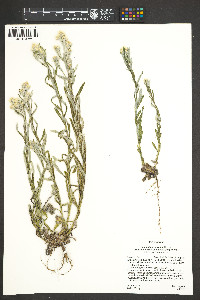
|
|
|
|
Family: Asteraceae
Macoun's cudweed, more...Macoun's Rabbit-Tobacco (es: gordolobo)
[Gnaphalium decurrens Ives, non L., moreGnaphalium macounii Greene] |
Annuals or biennials (often sweetly fragrant), 40-90 cm; taprooted. Stems stipitate-glandular throughout (usually persistently lightly white-tomentose distally). Leaf blades (not crowded, internodes mostly 5+ mm) lanceolate to oblanceolate, 3-10 cm × 3-13 mm (distal linear), bases not clasping, decurrent 5-10 mm, margins flat to slightly revolute, faces weakly bicolor, abaxial tomentose, adaxial stipitate-glandular, otherwise glabrescent or glabrous. Heads in corymbiform arrays. Involucres campanulo-subglobose, 4.5-5.5 mm. Phyllaries in 4-5 series, stramineous to creamy (hyaline, shiny), ovate to ovate-oblong, glabrous. Pistillate florets 47-101(-156). Bisexual florets 5-12[-21]. Cypselae not ridged, ± papillate-roughened. Flowering July-Oct. Dry, open habitats, pastures, open woods or edges, roadsides; 50-2600(-3000) m; Alta., B.C., Man., N.B., N.S., Ont., P.E.I., Que., Sask.; Ariz., Calif., Colo., Conn., Idaho, Ill., Ind., Maine, Mass., Mich., Minn., Mont., N.H., N.Mex., N.Y., Ohio, Oreg., Pa., S.Dak., Tenn., Utah, Vt., Va., Wash., W.Va., Wis., Wyo.; Mexico. Pseudognaphalium macounii is recognized by its stipitate-glandular, proximally glabrescent stems, bicolor and decurrent leaves, relatively large and many-flowered heads, and hyaline, shiny phyllaries. Reports of P. macounii from Texas are based on specimens of P. viscosum.
FNA 2006, Kearney and Peebles 1969, McDougall 1973 Duration: Annual Nativity: Native Lifeform: Forb/Herb General: Herbaceous annuals or biennials to perennials, to 80 cm tall, stems stout, branching above, herbage wooly, sweet-smelling. Leaves: Alternate, not crowded, lanceolate to linear, 2-10 cm long, not clasping but decurrent on the stem, bright green and glandular-pubescent above, white-tomentose beneath, the margins entire. Flowers: Heads discoid, relatively large, the outer flowers slender and pistillate, the inner ones coarser and perfect, flowers all fertile, receptacles without leafy bracts, involucres 5-6 mm high, campanulate to sub-globose, phyllaries straw-colored to pale brown at the tips, membranaceous and shiny, in 4-5 series, ovate to oblong with acute tips, scarious throughout, strongly overlapping, the heads numerous in dense glomerules at branch tips. Fruits: Achenes not ridged but are warty. Pappus of capillary bristles. Ecology: Found in dry, open habitats, pastures, open woods or edges, roadsides, and open coniferous forests, from 150-8500 ft (45-2591 m); flowering July-October. Distribution: Canada south to west Virginia, Texas, Arizona, and California. Ethnobotany: Unknown Etymology: Pseudognaphalium is false gnaphalium, the former genus name, while macounii is named for the Irish-Canadian botanist John Macoun (1831-1920). Synonyms: Gnaphalium degurrens, G. macounii, Pseudognaphalium viscosum Editor: LCrumbacher 2011 Similar to no. 5 [Gnaphalium obtusifolium L.]; stem ±glandular-hairy, becoming woolly in the infl, rarely somewhat woolly to near the base, as well as glandular; lvs distinctly decurrent at base, the upper surface ±glandular-hairy, the lower woolly or sometimes glandular-hairy; fls mostly 60-120, 6-20 of them perfect; 2n=28. Open places; Que. to B.C., s. to W.Va., Tenn., and Mex. July- Sept. (G. viscosum, misapplied) Gleason, Henry A. & Cronquist, Arthur J. 1991. Manual of vascular plants of northeastern United States and adjacent Canada. lxxv + 910 pp. ©The New York Botanical Garden. All rights reserved. Used by permission. From Flora of Indiana (1940) by Charles C. Deam This is a northern species. Many specimens are from open, sandy woods and I found a very sandy, fallow field of about five acres that was covered with old-field balsam and this species. This species was rare and found in the moister situations. The plants were much taller and, in most instances, with several branches from near the base that were almost as large as the central stem. …… Indiana Coefficient of Conservatism: C = 10 Wetland Indicator Status: N/A |
|
|
|
This project was made possible in part by the Institute of Museum and Library Services [MG-70-19-0057-19].
Powered by Symbiota

